Carrie Mae Weems
Württenbergischer Kunstverein
by Ben Livne Weitzman
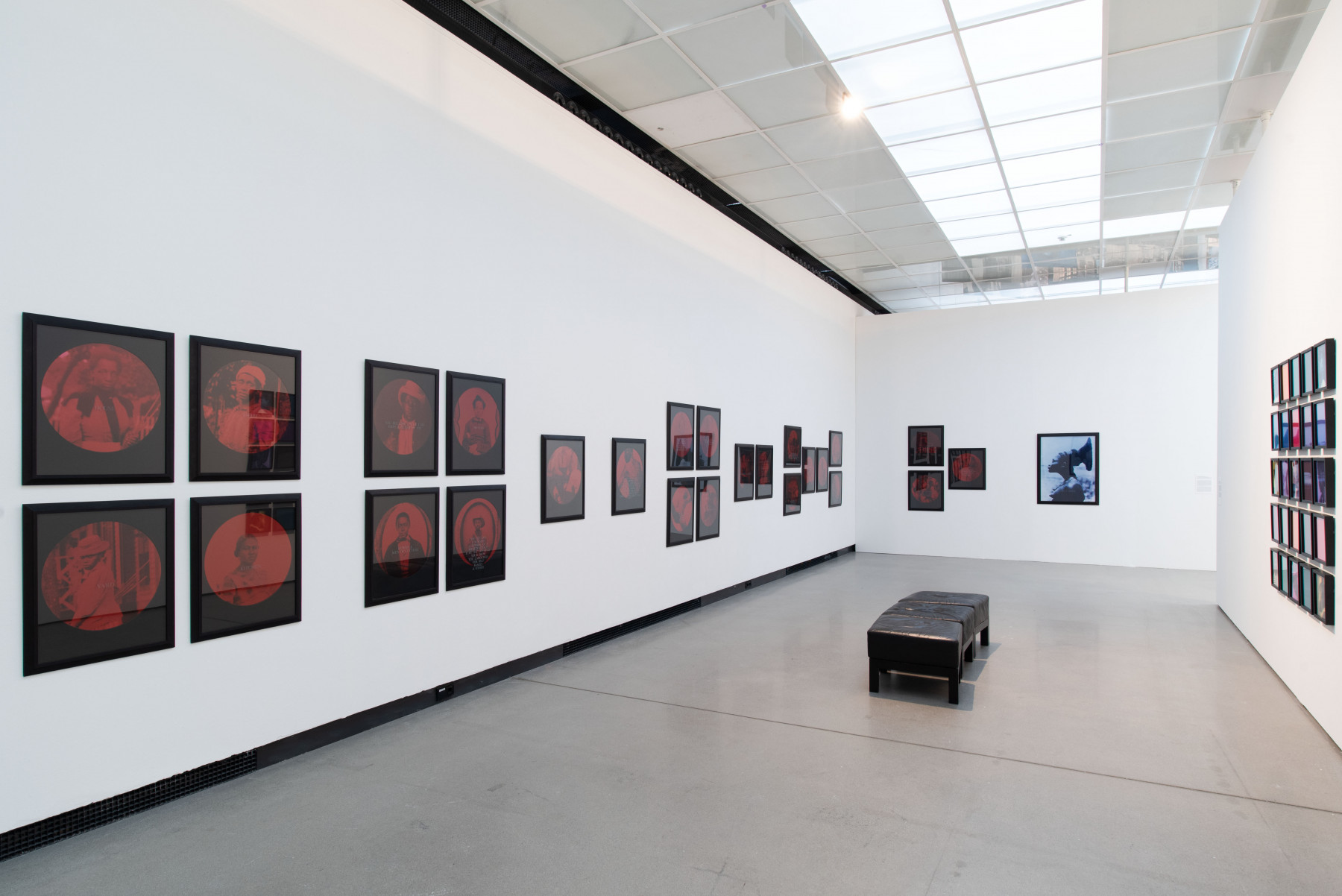
Carrie Mae Weems, From Here I Saw What Happened and I Cried, 1995-6, series of thirty-three photographs, digital c-prints on paper with sandblasted text on framing glass, 67.3 cm x 57.8 cm, 57.8 × 67.3 cm, and 106.7 x 78.7 cm. Installaion view, "The Evidence of Things Not Seen", the Württenbergische Kunstverein, Stuttgart, 2022. Courtesy of the artist, Jack Shainman Gallery, New York / Galerie Barbara Thumm, Berlin. Photography: Hans D. Christ.
The first time I encountered the work of Carrie Mae Weems was at a reading group in a now-demolished studio building in an industrial corner of Frankfurt. Friend and curator Leonie Chima Emeka brought forth a text by Cherise Smith titled “Carrie Mae Weems: Rethinking Historic Appropriations”, which focused on Weems’ photo series From Here I Saw What Happened and I Cried (1995-6). In it, Weems appropriates photographs taken in the 19th and 20th centuries of African and African Americans, such as the daguerreotypes taken by Joseph T. Zealy in 1850, using photography as a “scientific tool” to support racial theories. Weems reprinted the images in a larger format and with an additional red hue, reminiscent of a darkroom lighting, and framed them in a tondo with overlaying glass carrying text fragments (“A Negrois Type”, “An Anthropological Debate”, “& A Photographic Subject”). Smith’s article discusses the complex question of appropriation and reproduction of violent images, asking whether one should resurface and circulate images of violence, or better: can one use images of violence against them, i.e. to commemorate, condemn and reject the violent act of their capture? Smith claims that Weems’ presentation makes the images more seemly: “the careful placement of the text across the clavicles of the subjects draws attention to their faces, while the framing, matting, and toning softens the evidence of violence and dismemberment” [1]. I still remember the heated discussion we had while looking at the images from the series in the photocopied article. However, when I reencountered this work in the extensive survey exhibition of Weems that opened last month at the Württenbergischer Kunstverein in Stuttgart, I realised our discussion was in fact merely about the reproductions themselves. It is when staged and experienced in space that Weems’ work expands and shifts the question from what you see to how you see.
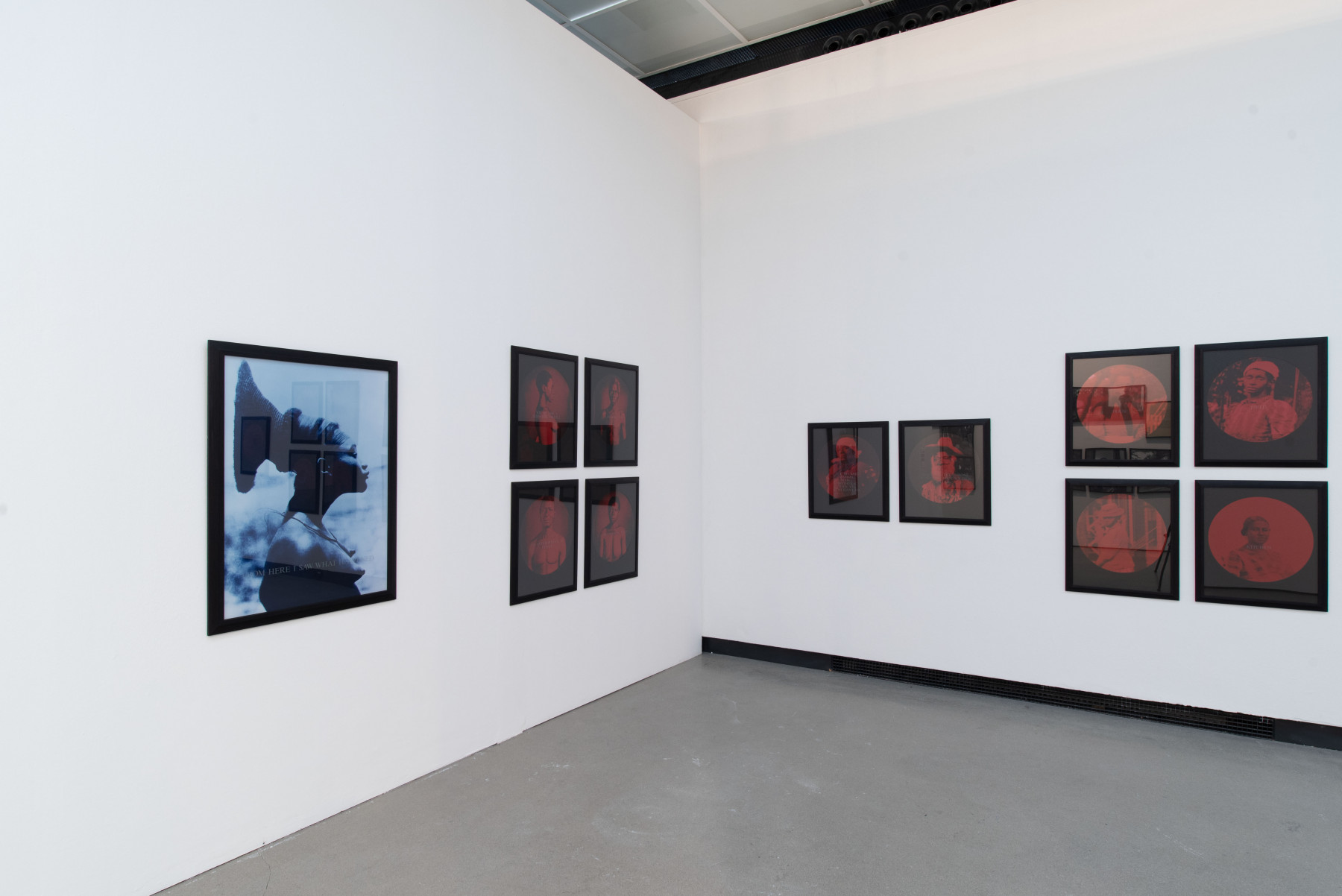
Carrie Mae Weems, From Here I Saw What Happened and I Cried, 1995-6, series of thirty-three photographs, digital c-prints on paper with sandblasted text on framing glass, 67.3 cm x 57.8 cm, 57.8 × 67.3 cm, and 106.7 x 78.7 cm. Installaion view, "The Evidence of Things Not Seen", the Württenbergische Kunstverein, Stuttgart, 2022. Courtesy of the artist, Jack Shainman Gallery, New York / Galerie Barbara Thumm, Berlin. Photography: Hans D. Christ.
Hung on one of the most inner walls of this impressively constructed exhibition architecture, the series all but surrenders itself to the viewer's gaze. Weems, whose career expands almost half a century, knows a thing or two about image-making. Placed behind reflective glass frames, the old images are constantly hidden by the viewer's reflection and the surrounding room. Passing through, one does not see them. One needs to come close, enter an intimate sphere, face the images directly, and look. Even then, the details are hard to identify. Hence Smith’s claim that the images are “exposed to viewers” is not entirely accurate. It is only at specific angles that the image reveals itself, and even then, a world of reflections is created on the surface of the glass, especially when the background is dark. Highlighted by the sclera, the pupils come through the most. The eye, the gaze, crosses the lens to meet your eyes directly, forming a bridge across time and space. So is the case with most works presented at the exhibition “The Evidence of Things Not Seen” –– if you want to see, you have to look. And even then, the images do not surrender themselves so easily to the viewer’s gaze [2].

Carrie Mae Weems, The Jefferson Suite, 1999, and Constructing History, 2008. Installaion view, "The Evidence of Things Not Seen", the Württenbergische Kunstverein, Stuttgart, 2022. Courtesy of the artist, Jack Shainman Gallery, New York / Galerie Barbara Thumm, Berlin. Photography: Hans D. Christ.
The direction of the gaze itself also plays a significant role in the staging of the exhibition and within the diegesis of the photographed scenes. Entering the space, one is faced with bodies with their back turned (The Jefferson Suite from 1999). An invitation to come and see what they see, pulling the viewer into the world of the exhibition. A world full of things unseen, where Weems is the show master: As we see in the photograph If I Ruled the World (2004), presented at the amphitheatre-like formation of the central hall of the space. Weems is dressed like a clown, holding the globe in one hand and her crouch in the other. Here we see this darkroom-red colour again, linking fantasy and reality, past and present. Moreover, it reminds us of the process of photography, making sure we won’t forget what these appearances are and recall their complex relations to the realities they (re)present.
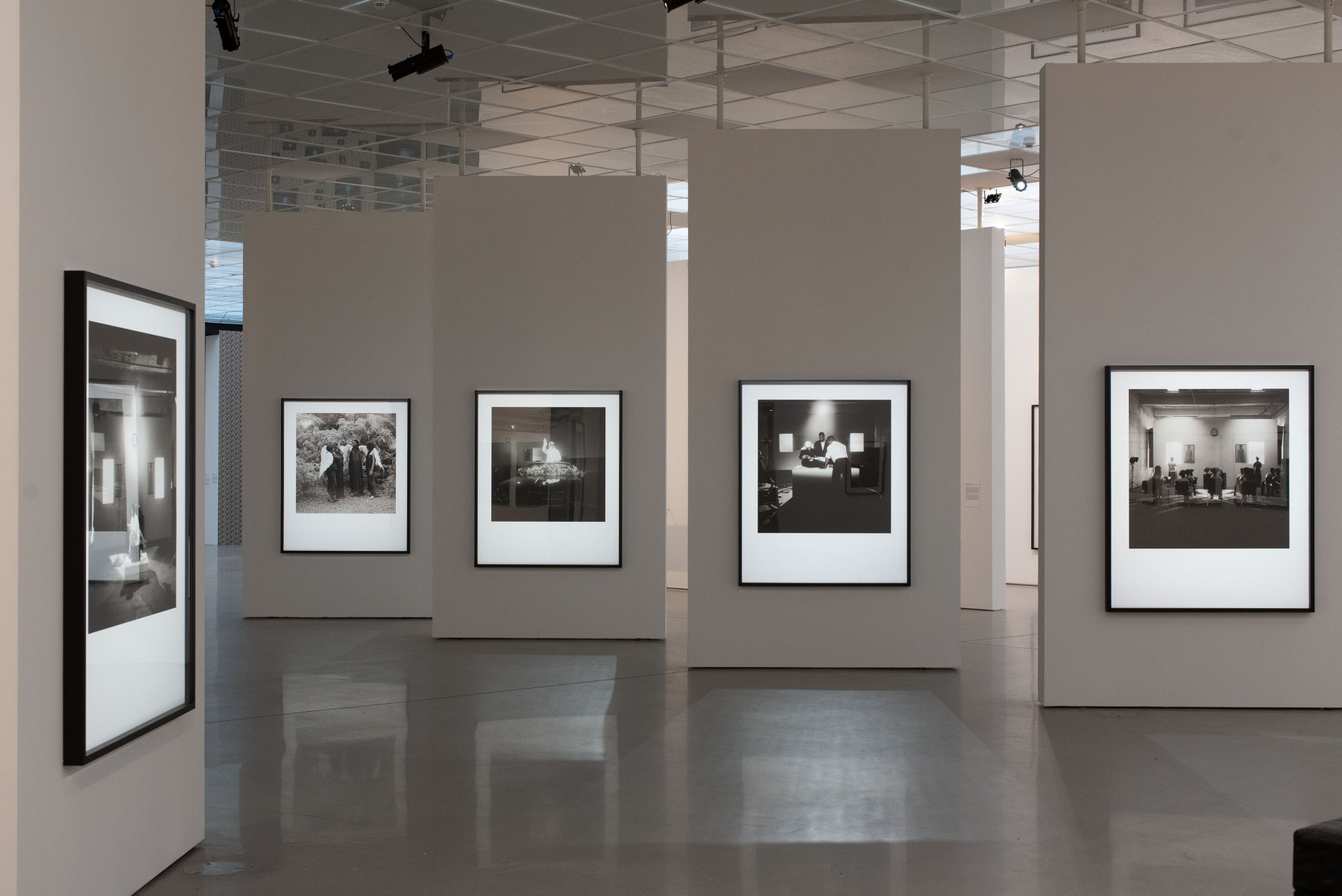
Carrie Mae Weems, Constructing History, 2008. Installaion view, "The Evidence of Things Not Seen", the Württenbergische Kunstverein, Stuttgart, 2022. Courtesy of the artist, Jack Shainman Gallery, New York / Galerie Barbara Thumm, Berlin. Photography: Hans D. Christ.
On the side panels, the ones framing the stage-like axis, Weems presents eight images from her Constructing History (2008) series. This project was done in collaboration with students at the Savannah College for Design and Art in Atlanta. In the series, they recreated historical scenes of political violence and staged them in impressive theatricality. A specific focus is given to assassinations that directed the flow of history in the US during the second half of the 20th century (Malcolm X, John F. Kennedy, and Martin Luther King, to name a few). On the backside of the panels hang images from the Museums Series (2006), in which Weems is photographed from the back, dressed in a simple black dress, standing in front of some of the most iconic museums of the West. Perhaps it is the Germanic environment of Stuttgart that forces me to think of Casper David Friedrich in general, and his Wanderer above the Sea of Fog (1818) and more so his The Monk by the Sea (1808-10). Being perhaps the poster boy of European enlightenment, conjuring his image and appropriating it places Weems in his shoes facing a force perhaps equivalent to that of the sublime and uncontrollable nature: the gatekeeping and narrative production taking place in these monumental sites of Western self-consciences. However, it is the placing of this series behind Constructing History that reveals elements of Weems’ practice only accessible when entering a space she had so carefully and precisely orchestrated. The Museum Series is the entrance point to Constructing History, or better: Constructing History is Weems’ answer to the Museums Series. We look towards the institution and are faced by the staged events in the front part. It’s a ritualistic, performative practice and a way of understanding and processing collective and individual trauma. On the side, Weems’ soft singing is emitted from a small projection, documenting a performance she conducted by herself in Berlin's Memorial to the Murdered Jews of Europe (Holocaust Memorial 2013-2022). Also here, lines of movement and perspectives are being formed as she crisscrosses Peter Eisenman’s interwoven memorial columns, creating a flow of healing rituality through the rigid axes.
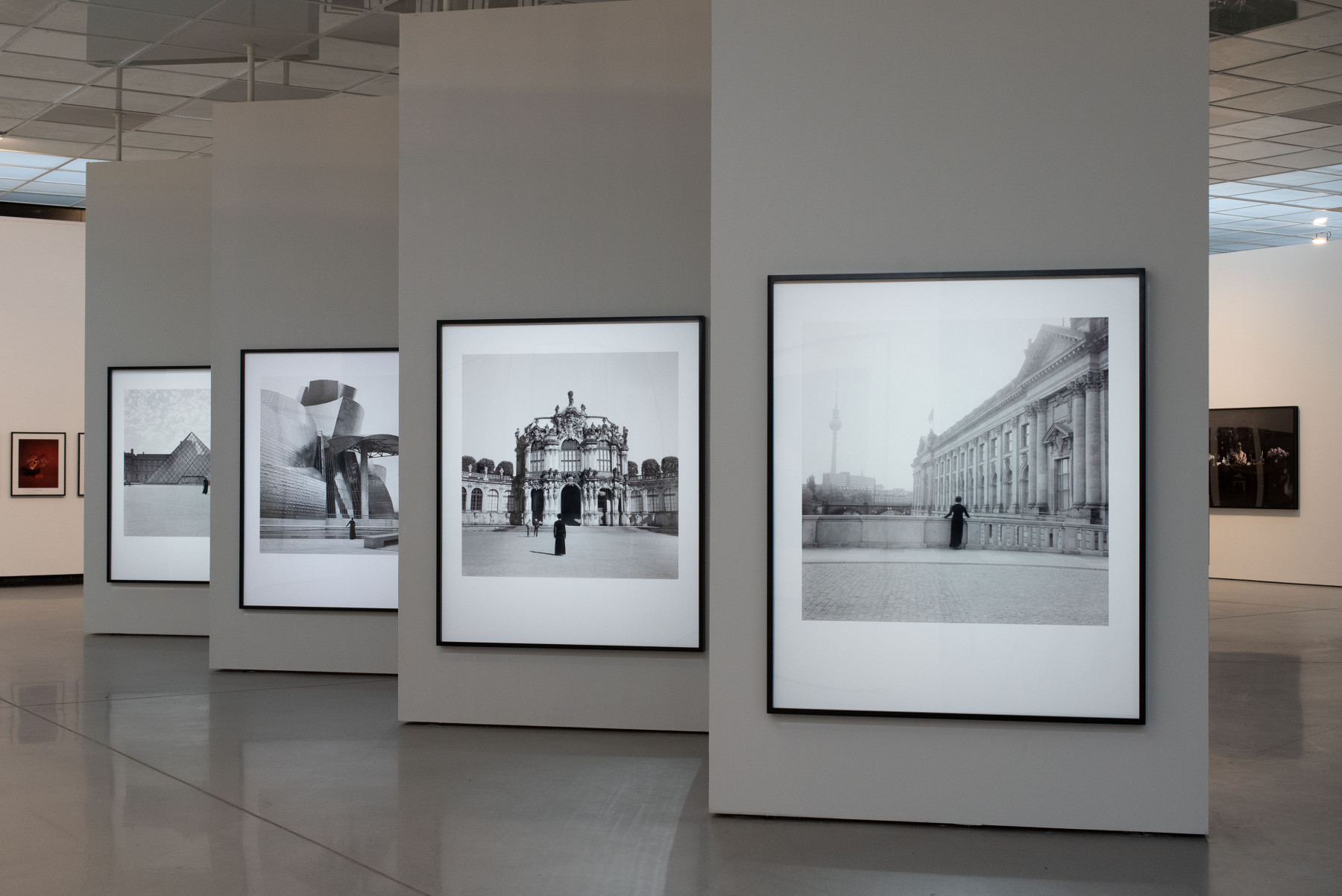
Carrie Mae Weems, Museums Series, since 2006. Installaion view, "The Evidence of Things Not Seen", the Württenbergische Kunstverein, Stuttgart, 2022. Courtesy of the artist, Jack Shainman Gallery, New York / Galerie Barbara Thumm, Berlin. Photography: Hans D. Christ.
Weems’ use of photography is not one of documentation but rather as a tool of the imaginary: a way of creating a reality from within the sedimented past and present. Holding on to the pains of the past and processing them towards a future. The experience of witnessing the show in person is nothing like seeing the reproductions of her works, which is also a general reminder of the power photography can yield when expanding from the two-dimensional frame. Smith’s claim against the resurfacing of images is valid in itself but misses the core gesture of Weems’ work: she does not expose these images but brings them back hidden and non-transparent. These images are resurfaced while keeping their opaqueness, inviting us to do the work of looking for them amidst our own reflection.
Indeed many of the images presented in the show escape the viewer's gaze. They do not present themselves easily and openly. One needs to return again and again, adopting different perspectives to try and unearth them. We know the images Weems shows us. We know what structural violence is. However, the invitation here is to look for them, to face them. In another part of the show, tables are set with 3D slide viewers and reels produced by Weems from the photographs seen in the show. One is invited to sit down, look actively through the eyepiece and call forth the images, creating an intimate space of encounter between the viewer and the works by pushing on the trigger. Even though all the pieces in the show are directly confronting or relating to very concrete histories, the “Evidence of Things Unseen” is far from being a one-directional history lesson. It is a call. A call to take on the stage, the one left empty in the image of the stand equipped with microphones used as the exhibition poster. A call to do the work and actively look for the unseen in a long long history of violence and resistance.
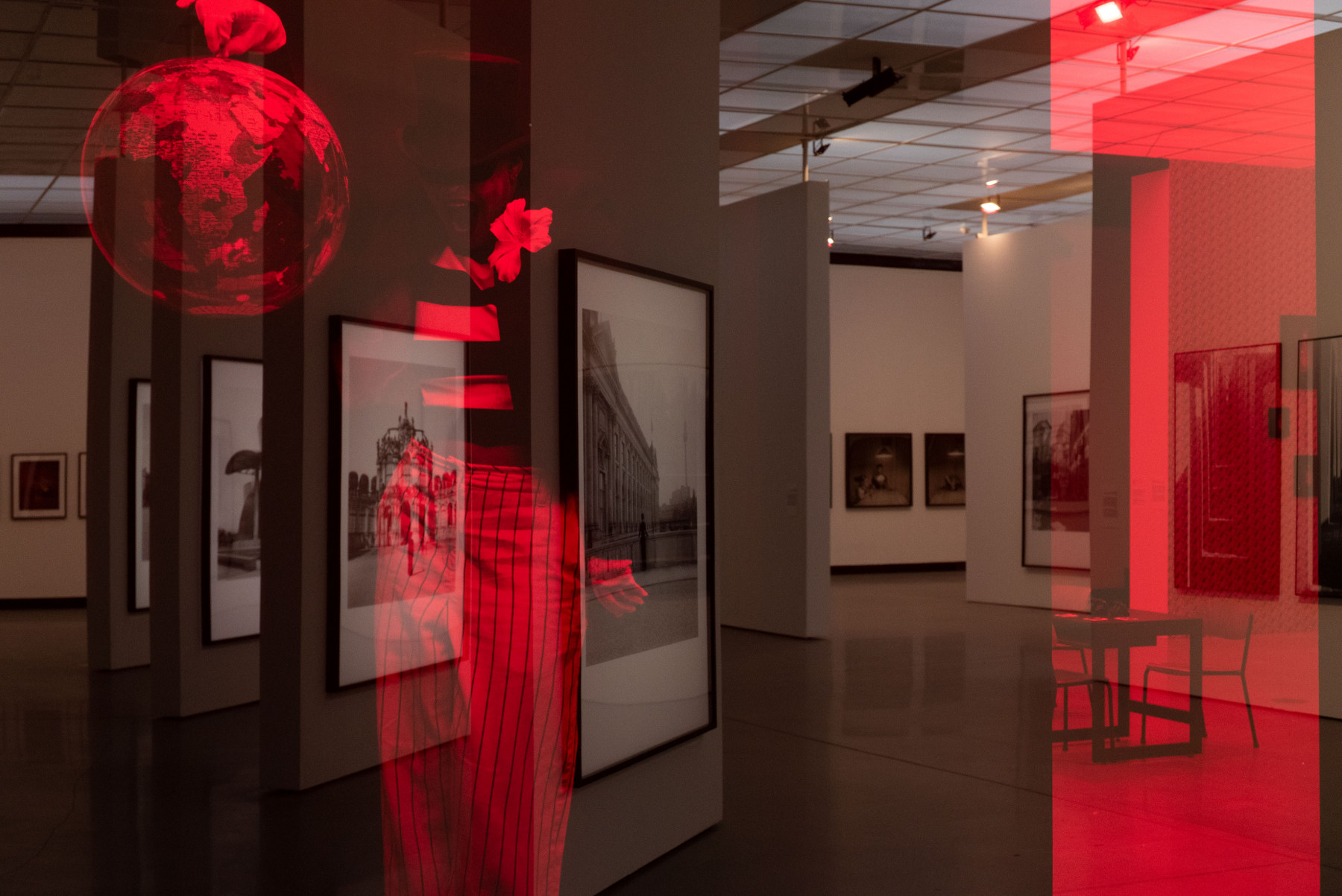
Carrie Mae Weems, The Joker, See Faust, 2003. Installaion view, "The Evidence of Things Not Seen", the Württenbergische Kunstverein, Stuttgart, 2022. Courtesy of the artist, Jack Shainman Gallery, New York / Galerie Barbara Thumm, Berlin. Photography: Hans D. Christ.
Carrie Mae Weems - The Evidence of Things Not Seen
02/04 – 10/07/2022
Württembergischer Kunstverein
Schloßpl. 2
70173 ,Stuttgart
[1] Smith, Cherise. "Carrie Mae Weems: Rethinking Historic Appropriations." Nka: Journal of Contemporary African Art, vol. 44, 2019, p. 38-50. 49.
[2] The exhibition's title is lent from a 1985 essay by James Baldwin, which looks into the Atlanta child murders in which 29 African American children and adults were kidnapped and killed between 1979 and 1980.